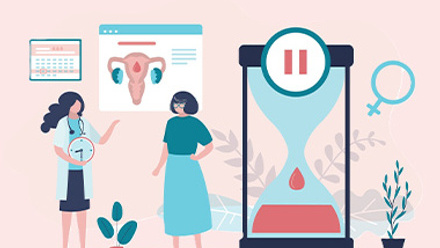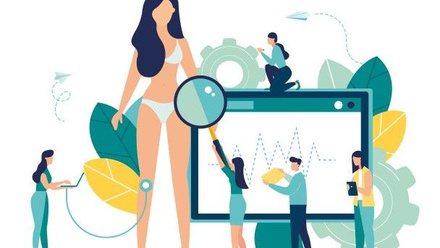Managing multigenerational workforces – and meeting wellbeing expectations
The global population is ageing, thanks to advancements in medical care and a growing focus on both physical and mental wellbeing. As a result, people are able to work for longer, leading to a continued increase in the average retirement age. UK workers are now eligible for the state pension at 66, which is is expected to rise to 67 in the next four years.
This extended work life has been further compounded in recent years by the ongoing cost-of-living crisis. Recent research has shown that a quarter of retired adults have considered taking a part-time job to bolster their earnings, while 59% had already made enquiries locally to see what work might be available to help make ends meet.
The emergence of Gen Z
Meanwhile, Generation Z, the generational cohort born between 1997 and 2012, has become the third-largest generation in the UK’s labour force, with 4.3 million young people aged 27 or under in employment in 2022. Notably, it is the most ethnically diverse generation in England and Wales.
It’s entry into the workplace has added a layer of richness to the existing multigenerational workforce. By 2025, it’s predicted that Generation Z will constitute 27% of the workforce.
Strength in diversity
Multigenerational workforces bring a catalogue of benefits, thanks to diverse perspectives and extensive knowledge derived from both experience and forward-thinking innovation. Contrasting opinions and social beliefs, such as those observed in Gen Z’s views on Brexit and environmental issues, enrich this diversity.
The amalgamation of skill sets from various generations can be incredibly valuable when confronting challenges and finding solutions. Older workers can draw on their experience to mentor younger team members and assist their career development, while younger generations can assist senior colleagues by helping them become more comfortable with change, learn to use new software and collaborative tools, as well as using social media in the workplace.
The uniqueness of Gen Z’s identity and more inclusive attitudes towards gender and sexuality also reflect a much broader shift in societal norms which can translate to the workplace.
Changing expectations
But managing a multigenerational workforce is not without its challenges. One example is the way communication is evolving between generations. Email and direct messaging are almost replacing phone calls, while more people opt for virtual meetings over face-to-face ones.
Even WhatsApp is an accepted means of client and colleague communication in many organisations. Style, tone, and method can all differ greatly.
One of the most apparent distinctions between generations is what they need and expect from their employer in terms of benefits.
Older employees may require specific support for age-related health concerns or navigating various life stages, particularly as they approach retirement. On the other hand, millennials and Gen Z have played a significant role in de-stigmatising mental health and being proactive about wellness.
They readily embrace and prioritise mental wellbeing, making it essential for employers to create a supportive workplace culture to attract and retain these younger employees. This probably represents the biggest shift from previous generations.
Wellbeing support expectations
The provision of healthcare for employees has evolved, as employers and companies have a greater recognition of the duty of care they have towards those in their employ. One of the more noticeable elements in this evolution is the growing prevalence of mental health support services, with many companies offering everything from ‘personal days’ to full-scale in-house counselling.
This addition to healthcare benefits or programmes can arguably be attributed in large part to the younger generations entering the UK workforce.
In the days when Baby Boomers took up their first positions, they likely would not have expected to share any mental health concerns with an employer, let alone be offered support towards their wellness.
Today, this support is more widely available, a positive step in the ongoing process of prioritising mental health. Nonetheless, there are still strides to be taken in workplaces to encourage uptake and understanding among managers to bring employers’ healthcare offering up-to-date and suitable for all.
There are four different personas when it comes to addressing mental health issues, which transcend generations:
- The Initiator – Prefers to solve mental health issues on their own, often seen in older generations
- The Explorer – Isn’t comfortable engaging with a therapist and opts for anonymous self-help tool
- The Aspirer – Seeks immediate guidance and structure
- The Rationaliser – Wants to express themselves and be deeply understood, often seen with with younger generations as mental health issues lose their stigma
It is important for employers and managers to understand that these aren’t fixed categorisations, but rather a spectrum of how employee engagement can change. Research has shown that an adaptive wellbeing programme can reduce employee turnover by up to 55%, indicative of a positive working environment, supportive culture, and engaged workforce.
Continuing the conversation
Promoting inclusion and open dialogue is pivotal in managing generational differences. Employers need to engage interactive programmes, initiatives, and tools which can be personalised to resonate with the varying needs of employees – their interests, their concerns, and their overall wellness – to increase job satisfaction and retention of top talent.
Hanging on to traditional wellbeing methods which overlook the specific needs of different generations is likely to lead to disengagement and unmet wellness objectives.
To drive measurable uptake and change, there needs to be active encouragement originating from senior leadership. This trickle-down effect increases participation and motivation, as well as helping employees value their wellbeing in the workplace and more broadly.
Training should be provided to those in managerial positions on how to best communicate and promote the benefits of a holistic wellness approach to a multigenerational workforce, and differing forms of communication and incentives need to be engaged to make it more participatory across the board.
By acknowledging and embracing age diversity in the workplace and promoting employee wellbeing in consequence, employers can more effectively navigate challenges and harness the benefits of a multigenerational workforce with its variety and skills and experiences.
This is a step toward a future where workplaces are not just places of business, but communities where people grow, innovate and change the world together.
Supplied by REBA Associate Member, Dialogue formerly Tictrac
We're an employee wellbeing platform dedicated to helping employees live healthier lives.








